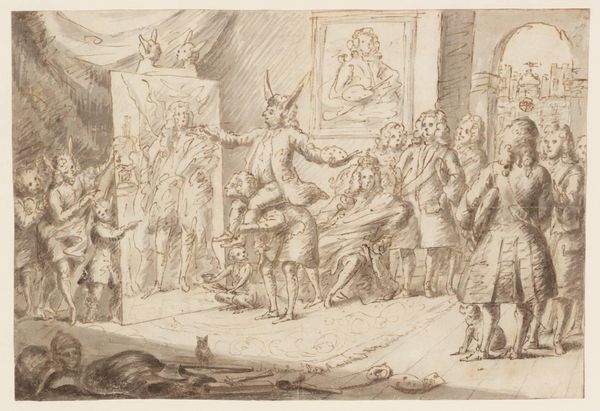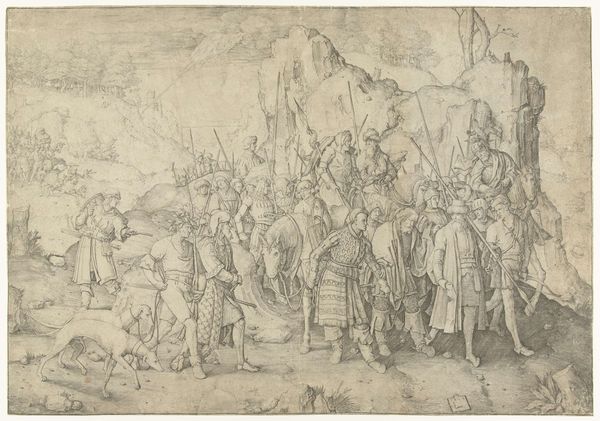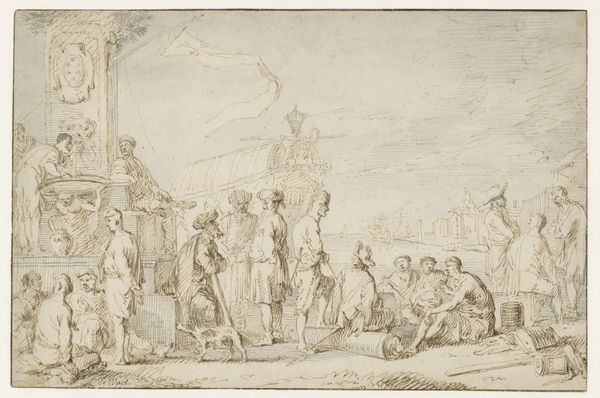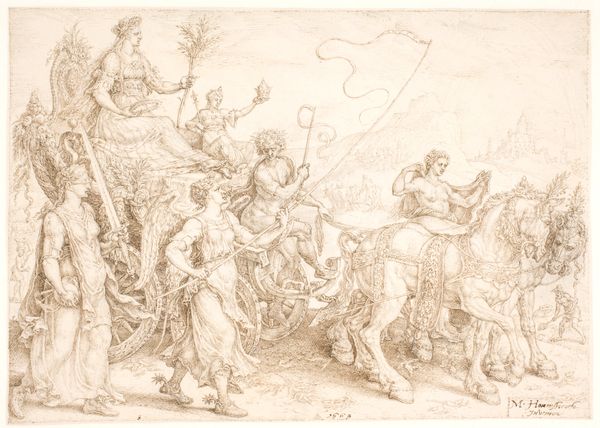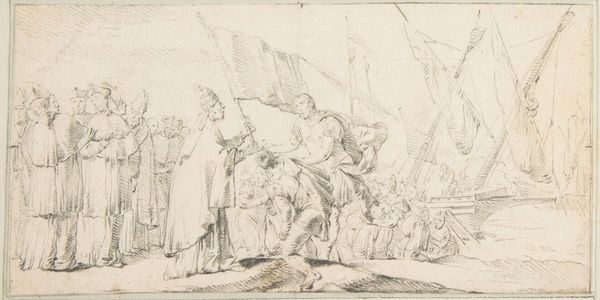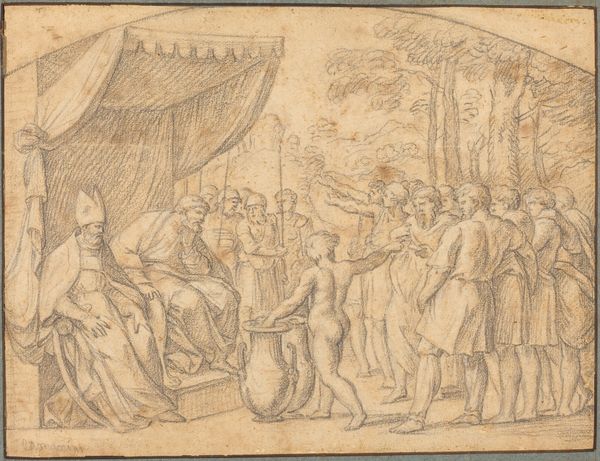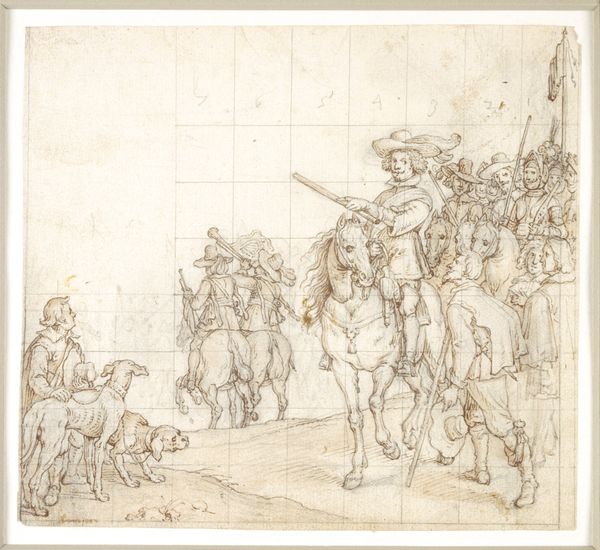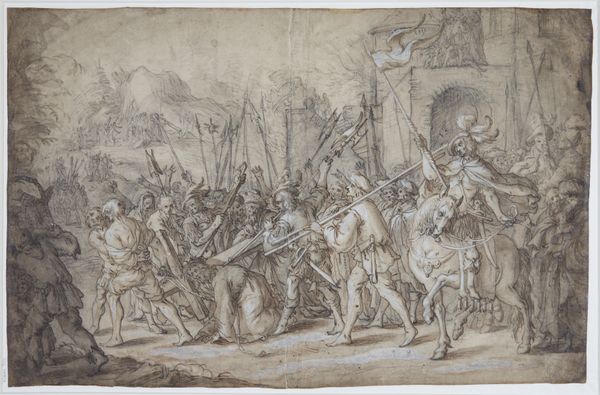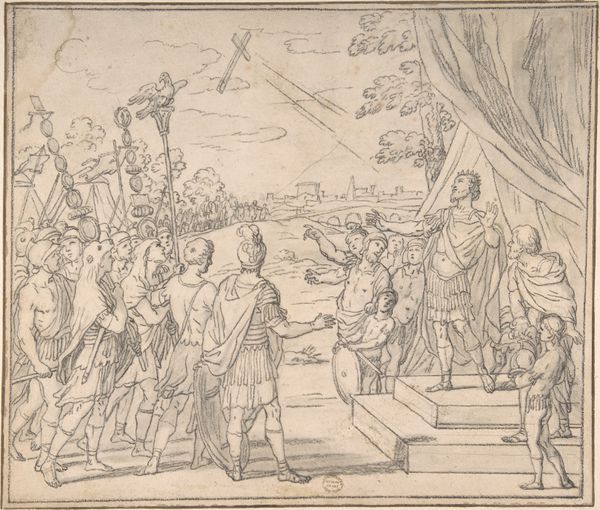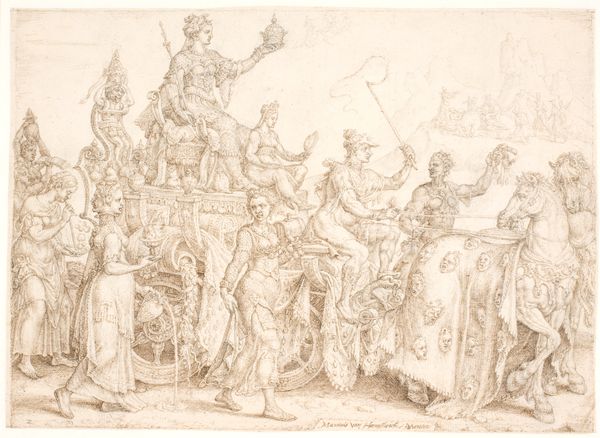
Aanklacht tegen de drie jongelingen Sadrach, Mesach en Abed-nego 1564
0:00
0:00
maartenvanheemskerck
Rijksmuseum
drawing, paper, ink
#
drawing
#
narrative-art
#
mannerism
#
figuration
#
paper
#
ink
#
ink drawing experimentation
#
pen-ink sketch
#
history-painting
#
academic-art
Dimensions: height 196 mm, width 249 mm
Copyright: Rijks Museum: Open Domain
Curator: Looking at this drawing, I am struck by its dramatic, almost theatrical energy. Editor: Indeed! The level of detail, the sheer density of figures, all rendered in ink on paper. It’s overwhelming, yet compelling. What am I seeing here? Curator: This is "Aanklacht tegen de drie jongelingen Sadrach, Mesach en Abed-nego," or, "Accusation Against the Three Youths, Shadrach, Meshach, and Abednego," created in 1564 by Maarten van Heemskerck. Editor: Right away, I recognize this is from the Book of Daniel. Three Jewish men refuse to bow to a statue erected by King Nebuchadnezzar, here seen on horseback, canopied and elevated—symbols of patriarchal authority and imperial power. Their crime is resistance. Curator: Notice how Heemskerck emphasizes the splendor of the king juxtaposed with the stoicism of the accused. The statue in the background… what cultural values was the artist emphasizing by using an overtly classical form? Editor: He’s visually linking Nebuchadnezzar to Roman emperors, equating that ancient authority with the power structures of 16th century Europe. The youth’s refusal is, by extension, resistance against any earthly tyranny that demands obedience over spiritual convictions. Curator: Note the rigid poses of the guards, echoing the lines of their spears. In contrast, the three youths appear almost… vulnerable. Editor: Vulnerable, yet resolute. Consider what this meant in the context of the Reformation, during which people faced persecution for their faith. The drawing becomes a symbol of religious defiance against oppressive rulers. A powerful statement of human agency against systemic injustice. Curator: I agree, the timelessness of this narrative provides an echo through the ages of human striving for spiritual autonomy. What really endures with this piece, I think, is how expertly Heemskerck portrays an iconic, universal struggle, reduced to individual moral conviction. Editor: For me, it lies in understanding how artists use historical narratives to comment on their own times. "Aanklacht tegen de drie jongelingen Sadrach, Mesach en Abed-nego" is not simply an illustration; it's a timeless cry for justice and a beacon for anyone standing up to power.
Comments
No comments
Be the first to comment and join the conversation on the ultimate creative platform.
